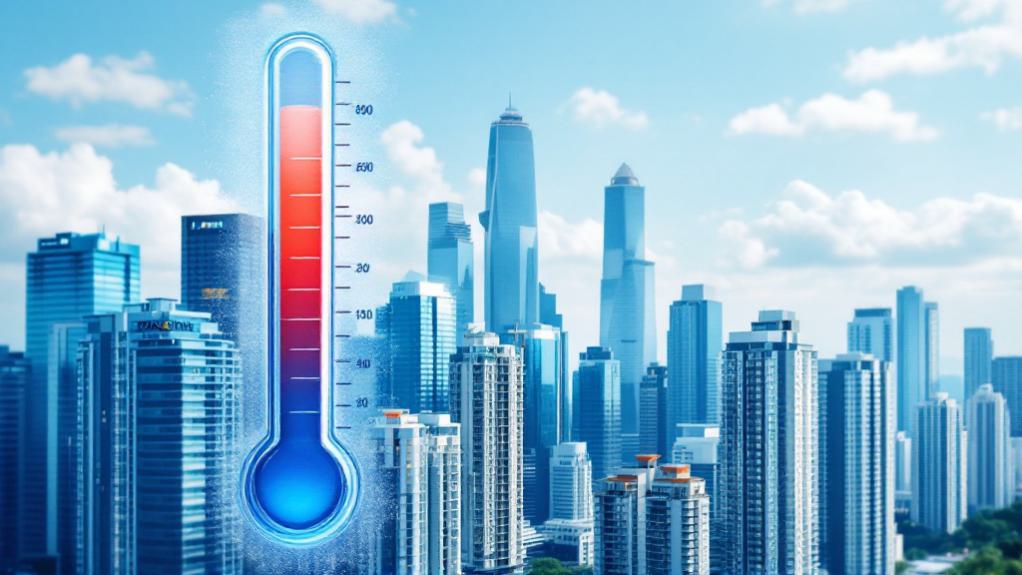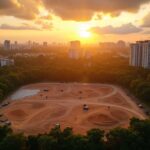Singapore’s property cooling measures (2022-2023) encompass extensive interventions targeting market stability and affordability. The government raised the Additional Buyer’s Stamp Duty for foreigners to 60% in April 2023, successfully reducing foreign purchases from 7% to approximately 3-4%. These policies, complemented by supply-side initiatives including 100,000 BTO flats between 2021-2025, aim to moderate price appreciation while preventing market overcorrection. Transaction volumes declined by 10% in 2023, yet HDB resale prices continued their upward trajectory for twelve consecutive quarters. Further adjustments remain contingent on evolving economic indicators.

While Singapore’s residential property market has remained remarkably resilient despite global economic headwinds, the government has implemented a thorough series of cooling measures to maintain market stability and address affordability concerns. Since December 2021, the government has strategically introduced various policies targeting both public and private housing sectors, with particular emphasis on moderating foreign investment and speculative activities.
The April 2023 adjustment of Additional Buyer’s Stamp Duty (ABSD) rates, which elevated the rate for foreigners to 60%, represents one of the most significant interventions in recent years. These policy interventions serve multiple objectives within Singapore’s complex property ecosystem. Authorities aim to promote sustainable market growth aligned with economic fundamentals, prioritize housing for owner-occupation rather than investment, and prevent the formation of asset bubbles that could threaten broader financial stability. Recent data shows private home sales reaching record-high levels not seen since March 2013, raising questions about whether more cooling measures may be needed.
Singapore’s aggressive foreign buyer tax serves as a calculated circuit-breaker, safeguarding market fundamentals while prioritizing genuine homeownership over speculation.
The government’s approach combines demand-side management with substantial supply-side initiatives, including the commitment to deliver 100,000 BTO flats between 2021 and 2025. These restrictions complement existing regulations that allow foreigners to freely purchase private condominiums but face significant limitations on landed properties. Market data indicates measurable impacts from these interventions, with foreign purchases dropping from 7% to approximately 3-4% following the April 2023 measures.
The Core Central Region (CCR), traditionally popular among international investors, has experienced more pronounced effects than Outside Central Region (OCR) and Rest of Central Region (RCR) segments, which continue to demonstrate resilience supported by domestic first-time buyers. Industry analysts project an overall transaction volume decrease of approximately 10% for 2023.
The Singapore government maintains a vigilant stance, indicating it is “not averse” to implementing additional measures should market conditions warrant further intervention. HDB resale prices have continued to increase for 12 consecutive quarters despite the cooling measures, though at a slower rate of growth. Officials are carefully balancing cooling objectives against potential overcorrection risks, particularly given prevailing economic uncertainties.
Future policy considerations may include adjustments to seller stamp duties, loan limits, or debt servicing ratios, with continued attention to foreign investment patterns in residential properties. Through this extensive approach, authorities seek to maintain the delicate equilibrium between property market stability, economic growth, and housing affordability for Singaporeans.
Frequently Asked Questions
How Do Cooling Measures Impact Rental Prices?
Cooling measures impact rental prices through a dual mechanism of supply contraction and demand modification.
The reduction in property investment decreases rental inventory, while foreign buyer restrictions particularly affect luxury segments.
Simultaneously, temporary renters emerge as some buyers wait out holding periods, creating upward price pressure.
Initial market response typically manifests as rental price appreciation, especially in high-end segments, followed by yield improvements that eventually attract more landlord participation, potentially stabilizing rates as markets adjust.
Can Foreign Buyers Bypass ABSD Through Property Trust Structures?
Foreign buyers can no longer effectively bypass ABSD through property trust structures due to the May 2022 regulatory changes.
The government implemented a 65% ABSD rate for trust transfers, payable upfront, with strict refund conditions requiring irrevocable, non-contingent beneficial ownership vested in a specifically named beneficiary.
While limited refund possibilities exist, the stringent criteria, including mandatory beneficiary identification and prohibition of revocable arrangements, have effectively closed the previous trust loophole.
Will Cooling Measures Be Reversed if Property Prices Fall?
The Singapore government typically reverses cooling measures only when property price declines are sustained and significant, accompanied by broader economic justification.
Authorities maintain a measured approach, likely implementing graduated adjustments rather than wholesale reversals of existing policies.
Historical precedent suggests that modification of cooling measures occurs selectively, with officials prioritizing market stability, housing affordability, and sustainable growth over short-term market fluctuations, as evidenced by the government’s cautious stance during previous market corrections.
How Do Cooling Measures Affect Commercial Property Investments?
Singapore’s cooling measures create a significant redirection of investment capital toward commercial real estate, as these assets remain exempt from Additional Buyer’s Stamp Duty (ABSD).
This exemption, coupled with potentially higher rental yields, has increased demand for commercial properties, particularly shophouses and suburban developments.
The market may experience upward price pressure in prime locations, while financing remains less restrictive for corporate purchasers.
However, banks might implement stricter lending criteria to manage risk exposure.
What Historical Data Shows About Effectiveness of Previous Cooling Measures?
Historical data indicates varying effectiveness across different cooling measures.
The 2013 interventions triggered a 4-5 year price decline, while the 2018 measures merely slowed growth without reversing trends.
Transaction volumes typically contract 20-40% following major policy implementations, with foreign buyer participation temporarily diminishing before recovering within 6-12 months.
Recent measures show diminishing effectiveness, as evidenced by the 10.6% price growth in 2021 despite December 2021 restrictions, and continued HDB price appreciation despite multiple targeted interventions.





